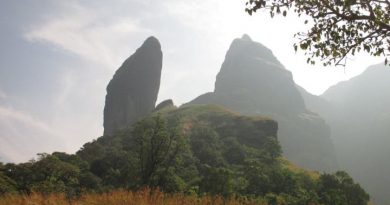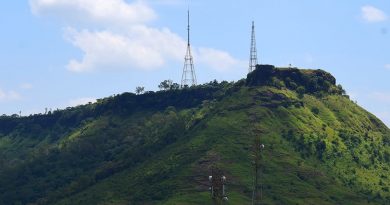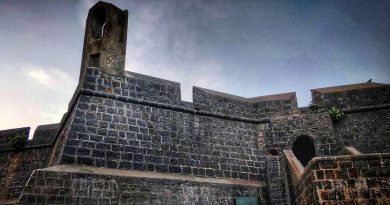Gopalgad Fort
Gopalgad was built at the mouth of Dabhol (ancient name Dalbheshwar) creek to keep a check on the trade route on the river Vashishti, which runs till Chiplun. This was also known as the fort of Anjanvel which was a significant port during Maratha regime. This great fort today unfortunately is at the mercy of a privateer who is utilizing the fort for his own gains, due to which one can see locked gates to the fort entrances and private guards on the fort. A group of trekkers has been protesting against this from past 7 years.
Type : Hill forts
District : Ratnagiri
History :
Shivaji Maharaj won the fort of Anjanvel from Adilshah in 1660 during the Dabhol campaign. There is no information as who built this fort. A dock was built here and the fort was named Gopalgad. In 1699, Siddi Khairatkhan captured the fort and it remained with the Siddis for next 46 years. The Siddis strengthened the fort. Tulaji Angre captured the fort in 1745; in 1756, it was captured by Ramji Mahadev Bivalkar for the Peshwas. After the third battle of Panipat, the person who faked as Sadashivrao Bhau stayed here for 6 months. The fort was with Marathas till 1818 when the British colonel Kennedy captured it.
Fascinating Spots :
The area of this fort is around 7 acres. Most of the ramparts are still intact, with most of its bastions. There is a well dug moat around the fort on two sides of the fort. Vehicles can go till the main entrance of the fort. There are 15 bastions to the fort, most of them now covered with trees. On these bastions are firm porches of laterite rock as a base for cannons. There was a stone inscription on these walls, but it is diminished today. The fort is built by constructing walls in staggered way, dividing it into three distinct structures, the upper citadel, the “Parkot”(परकोट) facing sea side and the “Balekot” (बालेकोट). Parkot was built by was strengthened by Kairatkhan and it is comprises dual layered wall. There is a door to enter from the Parkot with a cistern located nearby. There is a dilapidated palace with couple of porches on the citadel. There is a big rectangular cistern within the main walls.
As mentioned earlier, even if the fort gates are locked, the fort is open for all to visit. Due to malpractice in legal documents, the fort was illegally occupied by a privateer who uses it as a mango farm. Though there was a mass protest done by a Dombivli based NGO with the help of local people and political intervention, the District Collector’s office has been unable to take any action to date. However, people can visit the fort without hindrance.
Ways To Reach :
Guhagar, which is a famous tourist destination, is about 12 km to the south of Anjanvel. State transport and private buses ply regularly from Mumbai, Thane, Kalyan, Pune and various places. One can travel in ST bus to Anjanvel, though a private vehicle or rickshaw is preferable. It takes about 2 to 3 hours to see the fort completely.




